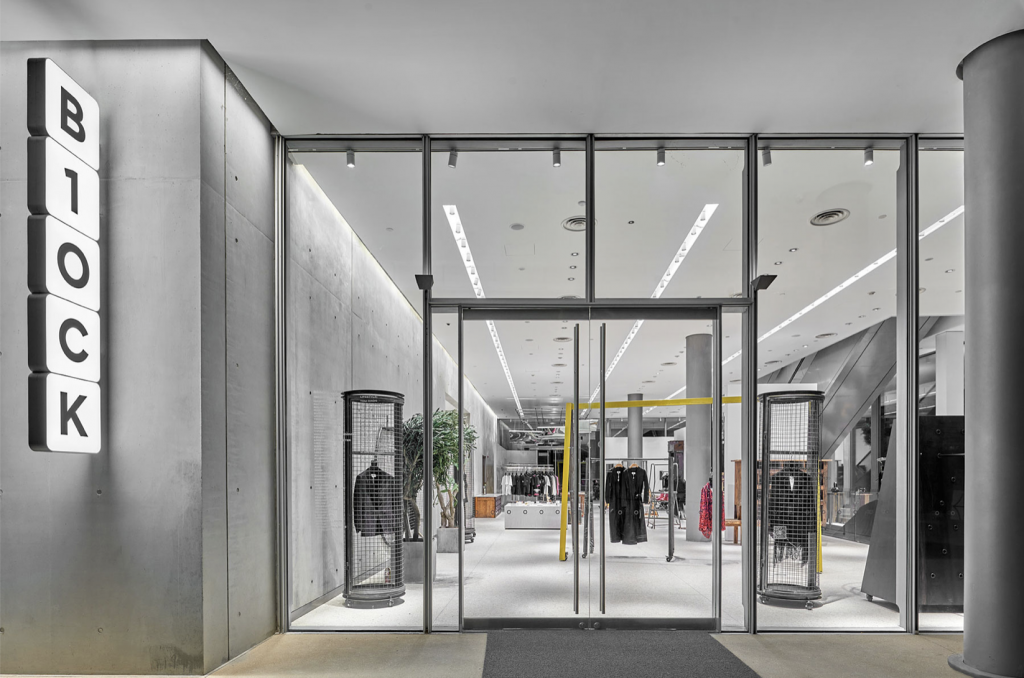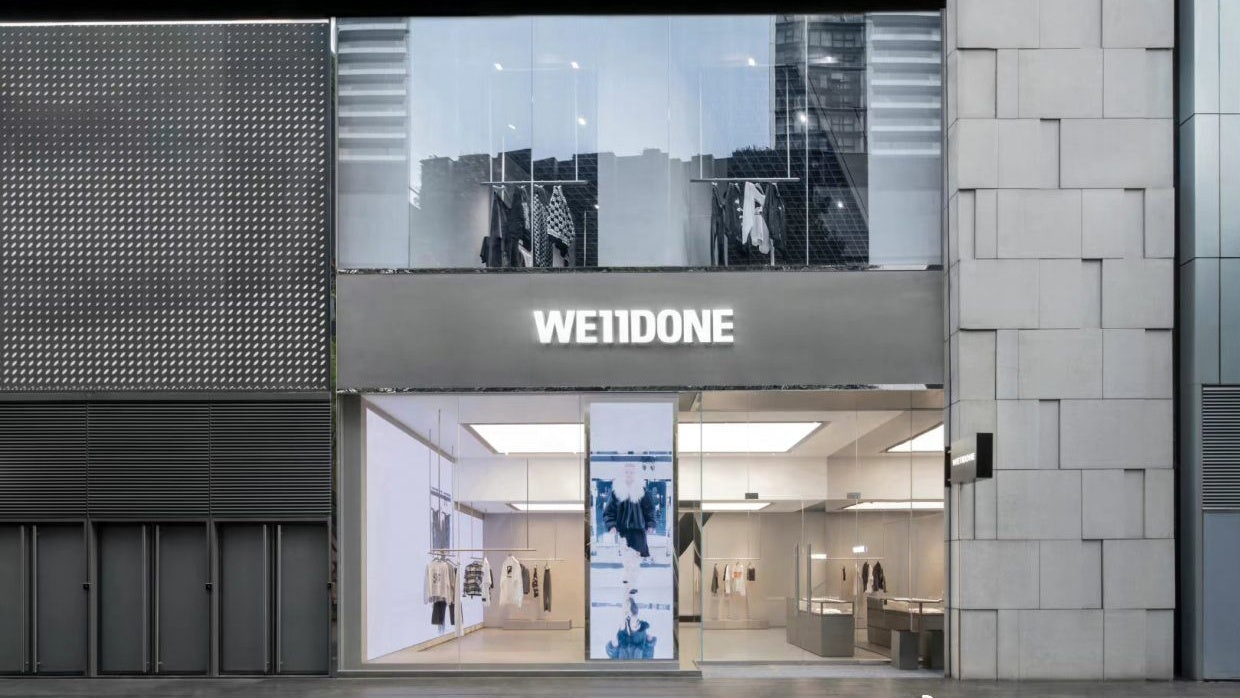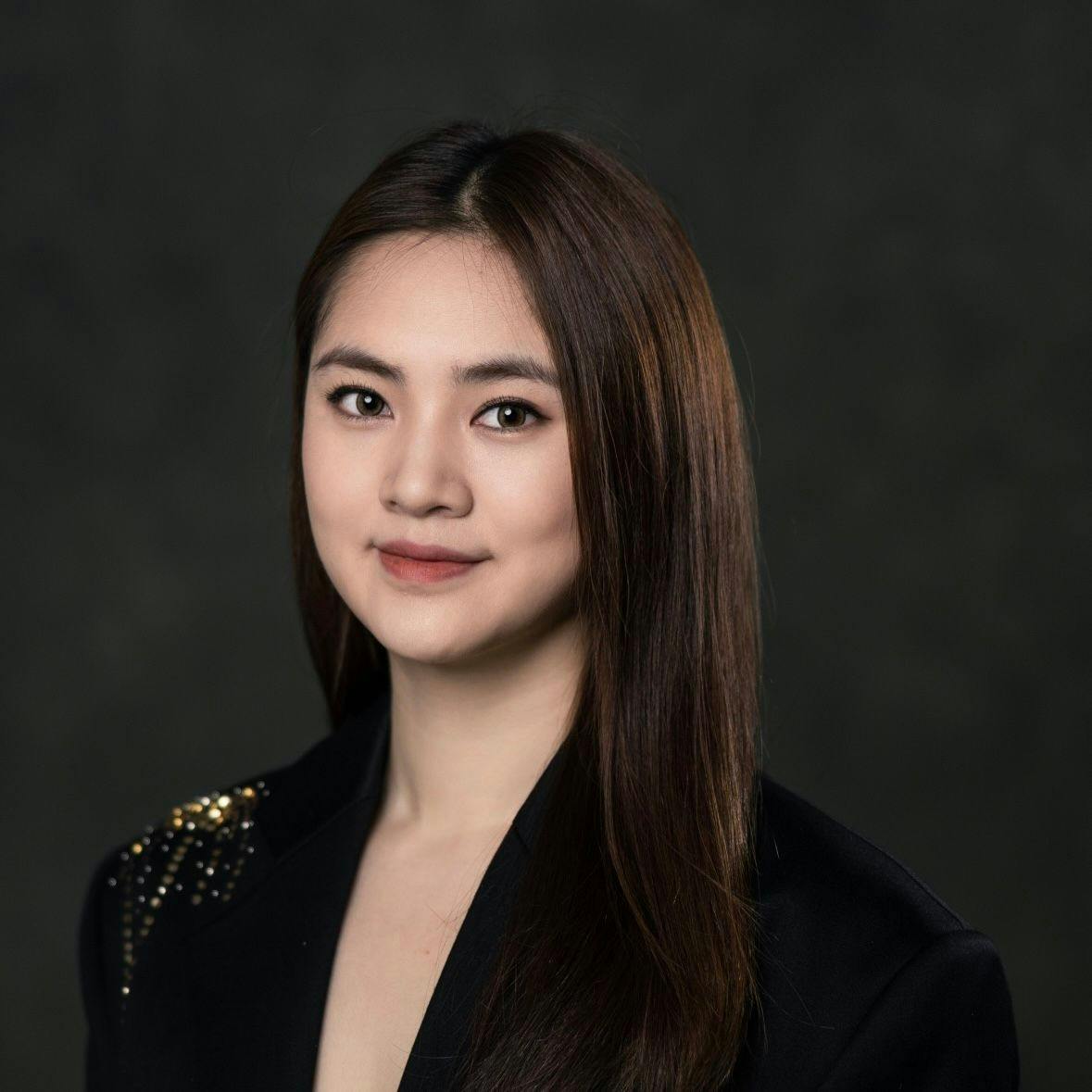Stylenanda is the latest Korean brand to step back from the Chinese market. The South Korean fast fashion label shut down its China website on October 31, following the closure of its Tmall flagship store earlier this year — marking a halt in its local ecommerce activities.
Across China, international brands and retailers have faced uncertainty and tumult amid China’s zero-Covid policy and pandemic-hit economy.
However, this hasn’t been the case for all K-fashion brands in China. While some players have reduced their presence in the mainland during the pandemic, We11done is one label that took this situation as an opportunity to expand their market share in the country.
In September, the brand launched its Tmall flagship store, alongside several stand-alone brick and mortar stores in Shenzhen, Beijing, Chengdu and Nanjing in September and October. The opening of We11done’s new storefronts took place several months after the brand announced that Sequoia Capital China, the China arm of American venture capital firm Sequoia Capital, had acquired a majority stake in the Korean retailer.
In addition to We11done, other names such as Low Classic, Anderson Bell, EENK, and pushBUTTON are among the popular South Korean brands in China, stocked by leading local multi-brand stores like SND with footprints in Chongqing, Shanghai, and Sanya, as well as Hug in Chengdu and Aranya. Together, these K-fashion brands are shaping the Korean fashion scene and contributing to the continuation of its influence in China.
The allure of the K-wave#
Known for its fixation on youth and image, South Korean K-pop culture is among the world’s most well-developed idol economies. Featuring immaculate imagery, aspirational lifestyle, as well as high-quality production, K-dramas, films, and music have been well-received by a global youth audience. K-pop idols of Chinese descent including Jackson Wang, Luhan, Zhang Yixing and others have drawn luxury brands' attention for collaborations.
However, China has implemented an unofficial ban on Korean celebrities since 2016 over political tensions between the two countries. Additionally, local authorities’ crackdown on celebrity culture, the fan economy, as well as “effeminate men and abnormal aesthetics” in recent years have also negatively impacted Korean cultural imports.
“If Scandi brands are labeled as minimalist design, colorful, easy-to-match and fun can describe the style of Korean firms.”
- Liu Qi, co-founder of multi-brand store Clap
Though the Korean wave has faded in China, its influence persists in the fashion sector. And the unique appeal of Korean style has also been recognized by fashion insiders. Liu Qi, co-founder of multi-brand store Clap, shared his observation saying, “If Scandi brands are labeled as minimalist design, I think colorful, easy-to-match and fun can describe the style of Korean firms.” He added that names like pushBUTTON, ADER error, and We11done are more "approachable" compared to Western designer brands. “They are good at playing with various colors and quirky details to impress consumers.”
These unconventional designs attract Chinese shoppers given the demographic’s rising levels of individuality and growing appetite for sophistication. Liu agreed that “fundamental and basic looks fall short of the demands of today’s savvy younger generation, and the emergence of these relative niche labels fill the gap in the Chinese market.” This change in consumer mentality explains the boom of Korean names targeting the affordable luxury market.

Venture capitalists bet on K-fashion brands’ growth#
Among the South Korean brands that have expanded to China, We11done has achieved the most rapid growth. Founded in 2015 by Jessica Jung and Dami Kwon (K-pop singer G-Dragon’s sister), the label is dedicated to making “clothes that are rare and well done,” as described by the two founders in an interview with Hypebae. When it just launched, endorsements from G-Dragon, as well as Chinese A-list celebrities such as Yang Mi and Angelababy helped build brand awareness immediately.
Angelica Cheung, venture partner at Sequoia Capital China, stated, “Under the leadership of Jessica and Dami, We11done excels in combining subtle Asian aesthetics with vibrant international expressions, which has made them a leading fashion player, part of the surge of Korean creativity that is capturing a global audience.”
Not surprising that the label secured an undisclosed amount of investment from Sequoia China’s fund this January. The venture capital firm’s local and global resources, as well as its extensive experience in digital and retail innovation, will accelerate We11done's direct-to-consumer channels in major global markets such as China, the United States, and Europe.
This move also resolves a major complication that many Korean designer brands share: Daigou. Previously, Chinese shoppers accessed niche Korean brands via overseas personal shoppers, and the opening of more shops in China means that K-fashion will stay firmly planted in the local retail landscape.
The challenges of going mainstream#
Though financial investments from global funds have proven a promising outlook for emerging brands, they never guarantee success. In We11done's case, the best-selling items on its Tmall flagship store are its hero products from past seasons, which satisfy trend followers.
However, the availability of such offerings in a local capacity may also risk alienating the brand from original fans. Gen Z fashion lover Cici Xu is one: “I purchased the first We11done item in 2017. Back then, the brand’s silhouettes such as oversized blazers were really avant-garde.” But in recent years, Xi feels the brand is watering down its offerings — “just capitalizing the most popular hoodies with logos and signature shirt jackets.”
This tension between maintaining niche appeal and going mainstream has been a challenge for many growing designer brands. When K-fashion brands make ambitious offline expansions and land in major commercial shopping centers, their audiences grow from a small community to mass consumers.
In most cases, shoppers show stronger interest in top-selling items worn by celebrities and KOLs. As such, growing a brand’s reach while continuing to excite loyal customers is a pain point. Without the decades-long accumulated storytelling of legacy luxury houses, fast-growing Korean firms need more distinct and consistent narratives, beyond a K-pop-star wannabe, to conquer the mainland’s increasingly sophisticated shoppers.

